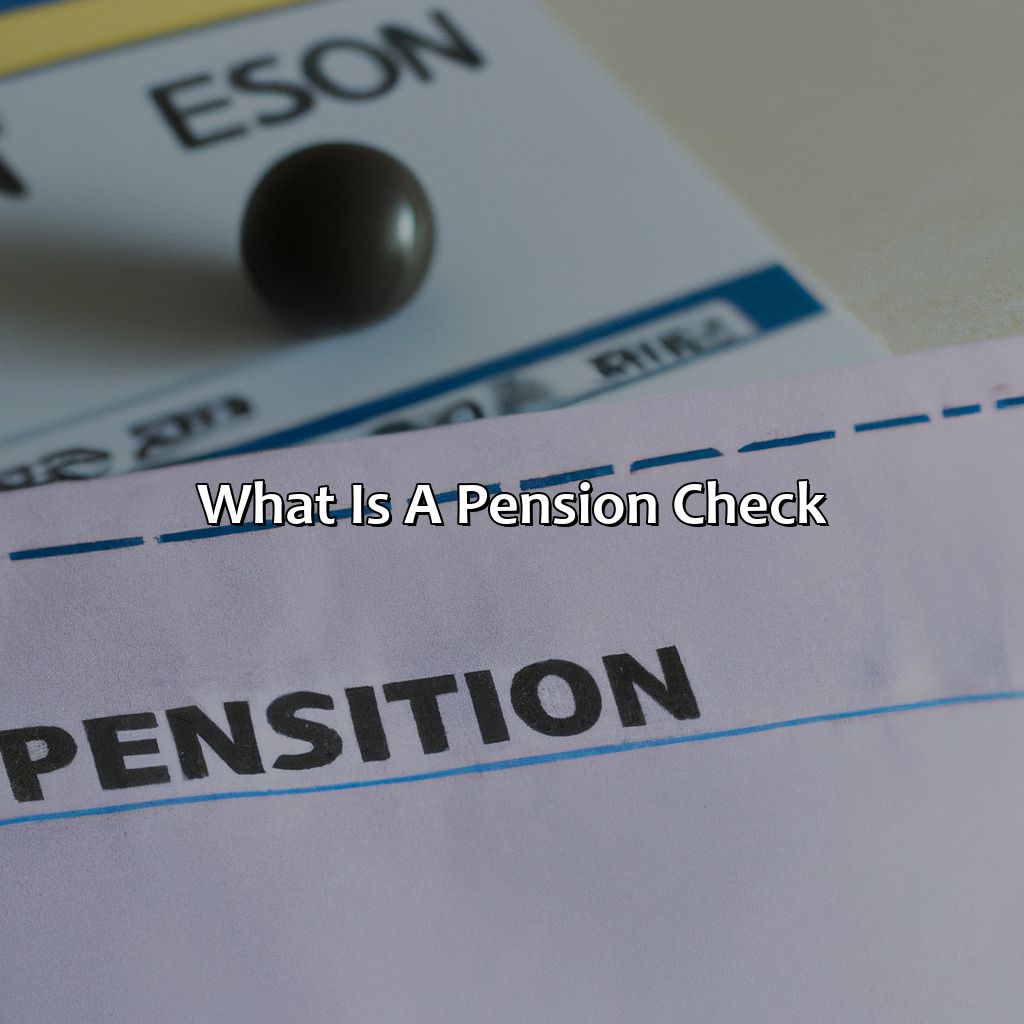What Is A Pension Check?
Key Takeaway:
- A pension check is a regular payment made to an employee who has reached retirement age and has contributed to a retirement plan throughout their career. It can provide a source of income for retirees to maintain their standard of living.
- Pension checks provide security for employees by guaranteeing a regular income in retirement. They also facilitate retirement planning by allowing workers to save for their future and have a stable source of income upon retirement.
- There are different types of pension plans, including defined contribution plans, defined benefit plans, and cash balance plans, each with its own set of rules and benefits. Pension checks can be received through lump sum payments, annuity payments, or a combination of both.
Are you worried about how to secure your financial future? Get answers to all your queries related to pension with this comprehensive guide. You’ll learn about pension checks and the associated benefits.
Definition of Pension Check
Pension check refers to a type of payment made to retired individuals by their former employers or the government, as a source of income in their post-retirement years. The amount of money and frequency of payments may vary, depending on factors such as years of service, age, and employer benefits.
Pension checks provide financial stability to retirees who may not have any other significant source of income. Some plans may have a lump-sum option, while others offer regular payments. Most pension plans are defined benefit plans, meaning the amount received is predetermined, usually based on salary and years of service. If you’re wondering how to find your pension information, there are various ways to do so depending on factors like the type of pension plan and your employer.
It is important to note that not all employers offer pension plans, and those that do may have specific eligibility requirements or limitations. It is essential to understand the terms and conditions of the plan to make informed decisions about getting a pension.
To maximize pension benefits, individuals should consider contributing to a personal retirement account, such as a 401(k) or Individual Retirement Account (IRA). These accounts are separate from employer-sponsored plans and can provide additional income in retirement.
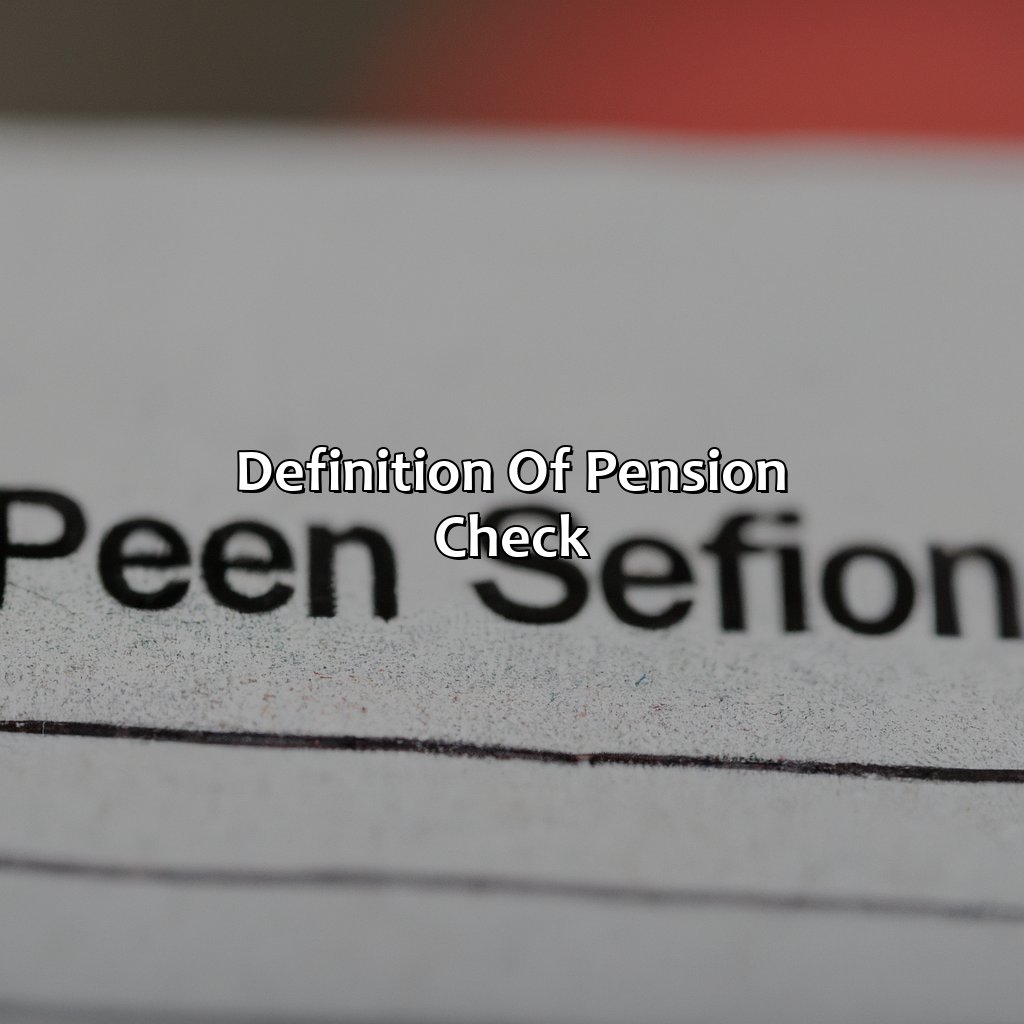
Image credits: retiregenz.com by Yuval Duncun
Importance of Pension Check
Gain insight into the value of pension checks. They are a source of income for retirees, bringing them security. Plus, they help with retirement planning. Pension checks are vital for financial stability and retirement planning.
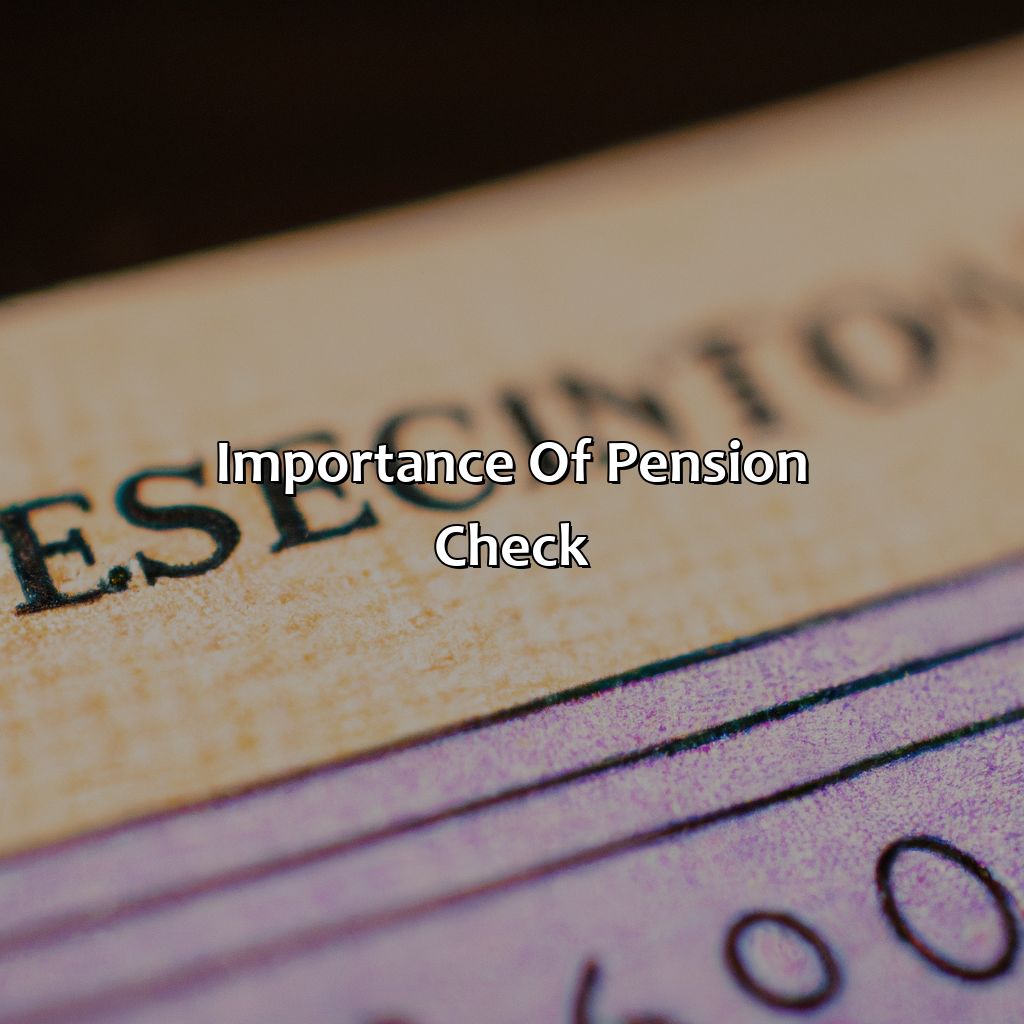
Image credits: retiregenz.com by James Arnold
Source of Income for Retirees
For retirees, having a stable and consistent source of income is crucial. This ensures that their needs are met and they can maintain a comfortable lifestyle. One such source of income is a pension check, which is a regular payment made to retired employees.
Pension checks are typically based on an employee’s years of service and salary history. They provide a guaranteed income stream that retirees can rely on throughout their retirement years. If you’re wondering about the what is ee pension, pension checks can be received monthly, quarterly or annually depending on the agreement with the employer.
It is important to note that not all employers offer pensions, and those that do may have differing terms and conditions. It is essential for employees to understand the details of their pension plan and make informed decisions regarding retirement planning.
In one instance, John worked for 30 years as a public school teacher in California and retired with a monthly pension check of $3,000. His pension check, along with his social security benefits allowed him to live comfortably throughout his retirement years without worrying about financial insecurity.
Working for the man may come with some strings attached, but at least you’ll have a pension to cling to when all else fails.
Security for Employees
Maintaining financial stability for employees is crucial. One of the means to achieve that is by ensuring a consistent pension income. Pension check, one of the essential components of a retirement plan, provides a sense of security for employees over their future finances.
Pension checks provide reliable and steady long-term payments to employees after they retire from work. These payments depend on factors such as employee’s age, tenure in service and salary earned during their working years. It is important for employees to have access to this financial cushion, particularly when faced with unexpected life events like illnesses or emergencies.
Having a consistent pension check has several benefits including; reduced dependence on the workforce at an older age, reduced stress and anxiety over financial matters and also an assurance of peace of mind for them and their families.
It’s necessary for organizations to provide resources and tools that foster employee engagement with pension programs. Some suggestions include increasing communication about contributions towards pensions, providing guidance on investment options and creating personalized calculators that allow employees to forecast potential income from pensions. With better education about pension arrangements, employees can make informed decisions about their future finances.
Retirement planning is like a game of chess – you have to think several moves ahead, but instead of capturing your opponent’s pieces, you’re capturing your own financial stability.
Facilitation of Retirement Planning
Retirement Planning Facilitation is essential for a secure financial future. One such important aspect is receiving regular Pension Checks. A Pension Check consists of a fixed amount paid out to individuals who have contributed to an employer’s pension plan for many years.
These checks serve as a steady stream of income that allows retirees to maintain their lifestyle. Additionally, they provide predictability and stability in an individual’s retirement planning process, ensuring that they can meet their financial obligations without worrying about running out of funds.
Furthermore, pensions are subject to market conditions and the longevity of the retiree, offering more options for one’s retirement portfolio diversification.
Get ready to feel like a kid in a candy store as we explore the sweet variety of pension checks.
Types of Pension Checks
Want to learn about the different types of pension checks? Check out the section on ‘Types of Pension Checks’. This has three subsections:
- Defined Contribution Plan
- Defined Benefit Plan
- Cash Balance Plan
Each has its own special benefits to meet your retirement needs.
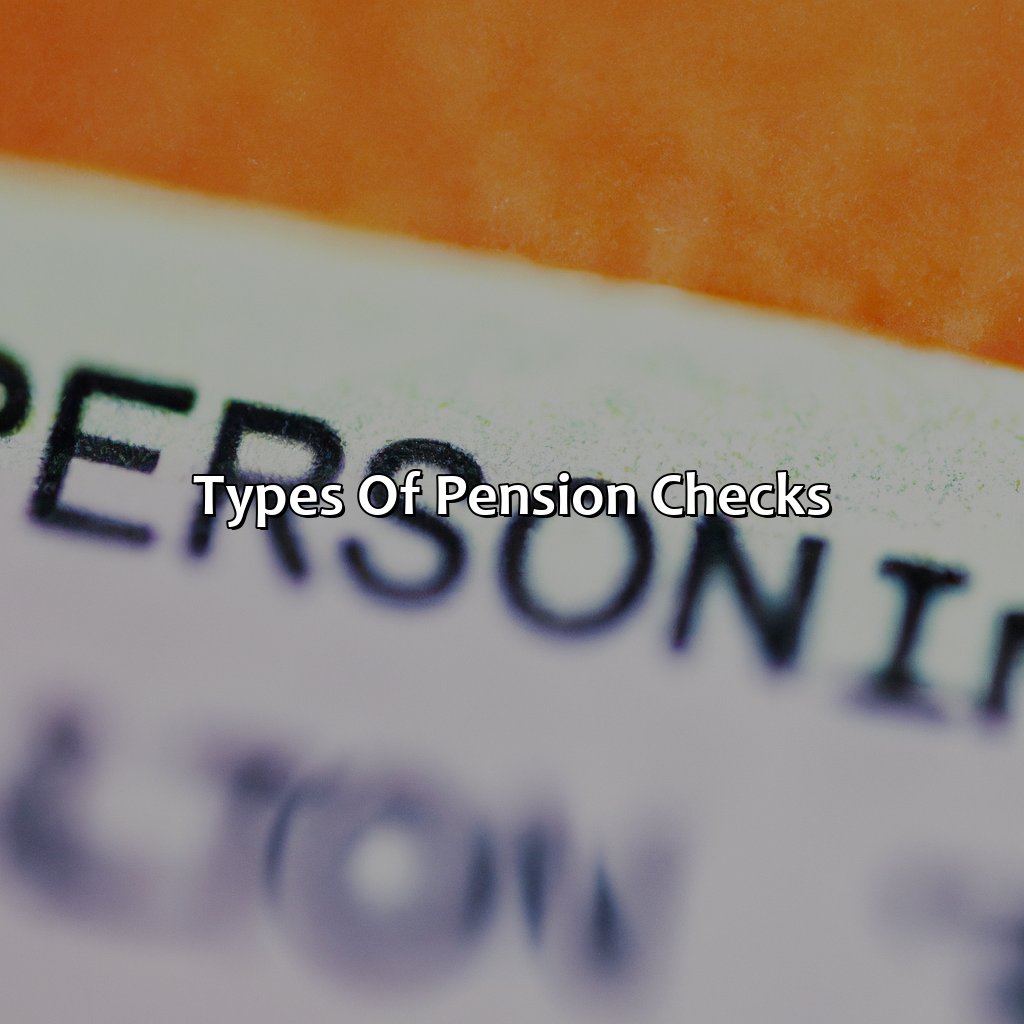
Image credits: retiregenz.com by Adam Washington
Defined Contribution Plan
A Contribution-Based Retirement Plan
This type of retirement plan is designed to grow with the amount of money an individual contributes over their working years. Contributions are made by both the employee and employer, with the option for the employee to choose how much of their income they want to contribute. The funds are invested into a portfolio of stocks and bonds, which can increase or decrease depending on market performance. Upon retirement, the accumulated amount can be withdrawn as a lump-sum or periodic payments.
One notable advantage of this plan is that employees have more control over their retirement savings and can make financial decisions that align with their individual goals. Another benefit is that employers often offer matching contributions, further increasing the overall retirement fund.
It’s important for individuals to consult with a financial advisor to ensure they are making informed decisions on contribution amounts and investment strategies suitable for their unique circumstances.
Don’t miss out on potential retirement savings – consider enrolling in a defined contribution plan offered by your employer or seek out a similar program independently. Proactive saving now can lead to a comfortable retirement in the future.
A defined benefit plan is like a unicorn, believed to exist but rarely seen in the wild.
Defined Benefit Plan
Pension checks guarantee a steady source of income for retired employees. One type of pension check is a plan that provides a specific payment to the employee, known as ‘Retirement Benefit Plan’. This payment amount is predetermined by using factors such as length of service and salary history. Pension contributions made towards this defined benefit plan go into a trust fund which then invests it, thereby earning returns. Based on the performance of investments, retirees receive a ‘reliable’ pension check throughout their retirement years.
Understanding defined benefit plans is crucial as they offer retirees certainty that they will receive a fixed sum regularly throughout their golden years. As there is specified value attached to these pensions, workers can rightly predict how much they could expect at the end of their service. The contribution amount an employer makes for next month’s paycheck may vary based on the trust fund’s performance but not the benefits promised to staff after retirement.
An interesting point about pension checks could be that while anyone can receive social security when it comes to employer-based pensions – only employees qualifying under its terms receive it. Pension funding also undergo proper scrutiny from auditors to ensure long-term sustainability and that obligations towards members are being fulfilled genuinely. If you’re wondering how to find out your pension, there are various resources available online to help you determine your eligibility and amount.
During 2016, many would remember cases against government employers’ failure to fund their pension payments adequately, leading to retiring workers losing out hundreds of dollars every month!
Get ready to cash in your work-life misery for a cash balance plan that just might make retirement worth it.
Cash Balance Plan
A defined benefit plan where an employer maintains an account for each employee is known as a Deferred Annuity Plan. Here, the retirement benefit is determined by the amount deposited in the employee’s account with a guaranteed minimum interest rate.
These plans are different from traditional pensions because they offer specific amounts of benefits based on contributions and actual returns on investment. The employer bears all the risks involved, making this a reliable pension option.
As an additional benefit, these plans generally do not require employees to contribute but employers may offer matching options for voluntary employee contributions.
Investing wisely and contributing often can maximize the benefit under this pension plan. Reviewing contributions and payment rates annually can help ensure adequate retirement savings.
Get ready to feel like a kid on Christmas morning, because receiving pension checks is the adult version of presents under the tree.
How to Receive Pension Checks
Gotta get those pension checks? Know your options! Lump Sum Payment, Annuity Payments, or a Combination of Both. Each has its pros and cons – choose carefully! Make sure you make the best decision for your financial needs.
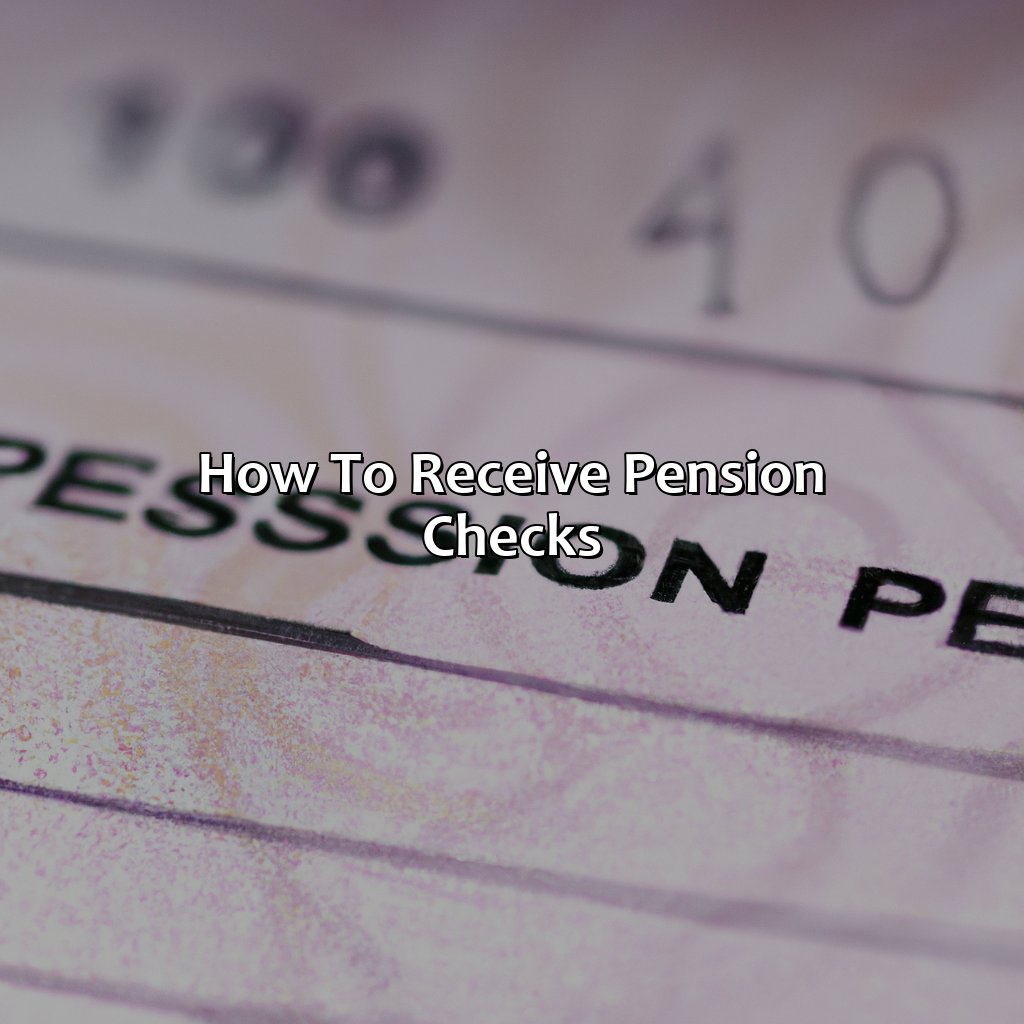
Image credits: retiregenz.com by David Arnold
Lump Sum Payment
If you are eligible, a large payout can be obtained from the plan in a single payment, also known as a one-time payment. A considerable amount of money is deposited into your account, which cannot be changed or modified.
A lump sum payment option is available for individuals who need access to their retirement funds immediately. The check covers the entire benefit amount and is usually tax-free. Depending on the plan’s guidelines and terms and conditions, participants may elect this form of payment.
In addition to receiving full settlement benefits at once, there are various advantages to taking a lump sum payment option compared to other annuity-based payouts. Planning for taxes on distributions may be simpler because they would not vary significantly as one s salary changes over time.
Lump-sum payments have advantages over regular pension payments. According to Forbes magazine, the majority of retirees choose this option when their plans offer it since it gives them greater control over how they use their money.
Annuity payments may be boring, but at least they’re a steady source of income until you realize you’re still not rich enough to retire on a private island.
Annuity Payments
An annuity payment is a series of regular payments made to an individual in exchange for a lump sum or periodic payments into a fund. The primary purpose of annuity payments is to provide a steady income stream during retirement. These payments may be received until death, or for a specified number of years, depending on the type of annuity purchased.
When an individual purchases an annuity, they are essentially entering into a contract with an insurance company. In return for their investment, the insurance company agrees to make regular payments in accordance with the terms of the contract. There are several different types of annuities, including fixed, variable, indexed and immediate annuities.
Fixed annuities offer guaranteed rates of return, making them an attractive option for individuals who value predictability and stability over potential growth. Variable annuities allow investors to choose from a variety of investment options, which can result in higher returns but also carry increased risk. Indexed annuities combine features of both fixed and variable products and are linked to specific market indexes.
It’s important to carefully consider one’s retirement income needs before purchasing an annuity product. It may also be helpful to seek guidance from a financial professional or consultant with experience in retirement planning.
According to Investopedia, “Annuity contracts can be very complex and often include fees that can eat into returns.” Therefore it’s vital to read all documents thoroughly before signing up for any product.
Why settle for just a retirement plan when you can have a retirement scheme and a pension check? It’s like getting a retirement cake with a side of frosting.
Combination of Both
Pensions are financial benefits given by employers or the government to people who have retired. A Combination of Both involves contributing to a workplace pension scheme alongside personal savings. This helps to increase retirement income and maintenance of current lifestyle choices.
The Combination of Both involves making regular contributions into employer-sponsored pension schemes and private retirement funds. It is essential to choose the right investment plan based on individual financial goals, risk tolerance and time horizon – as it affects the amount received during retirement. If you’re wondering how to check your pension, there are different methods provided by the government that can help you access your pension account.
Additionally, having a diversified portfolio spread out across different asset classes including cash investments, bonds, mutual funds, stocks and alternatives can help offset risks while generating better returns for the future.
It is important to note that an early start on contributions provides maximum benefits over time due to compounding interest. In addition, minimizing debt commitments and avoiding large withdrawals after contributions bring about more significant savings towards retirement.
In summary, a Combination of Both will provide a comfortable cushion for people during their golden years. Experts recommend discussing with professionals before choosing any particular investment plan as there are several factors involved in determining which one suits best.
Don’t worry, the government will always find creative ways to calculate your pension check amount… like reading your horoscope or consulting a Magic 8 Ball.
Factors Affecting Pension Check Amount
Your pension check amount depends on various factors. Knowing these factors is essential for a secure future. This section looks at how your pension check is calculated. It takes into account your:
- Length of service
- Salary
- Age
- Retirement plan type
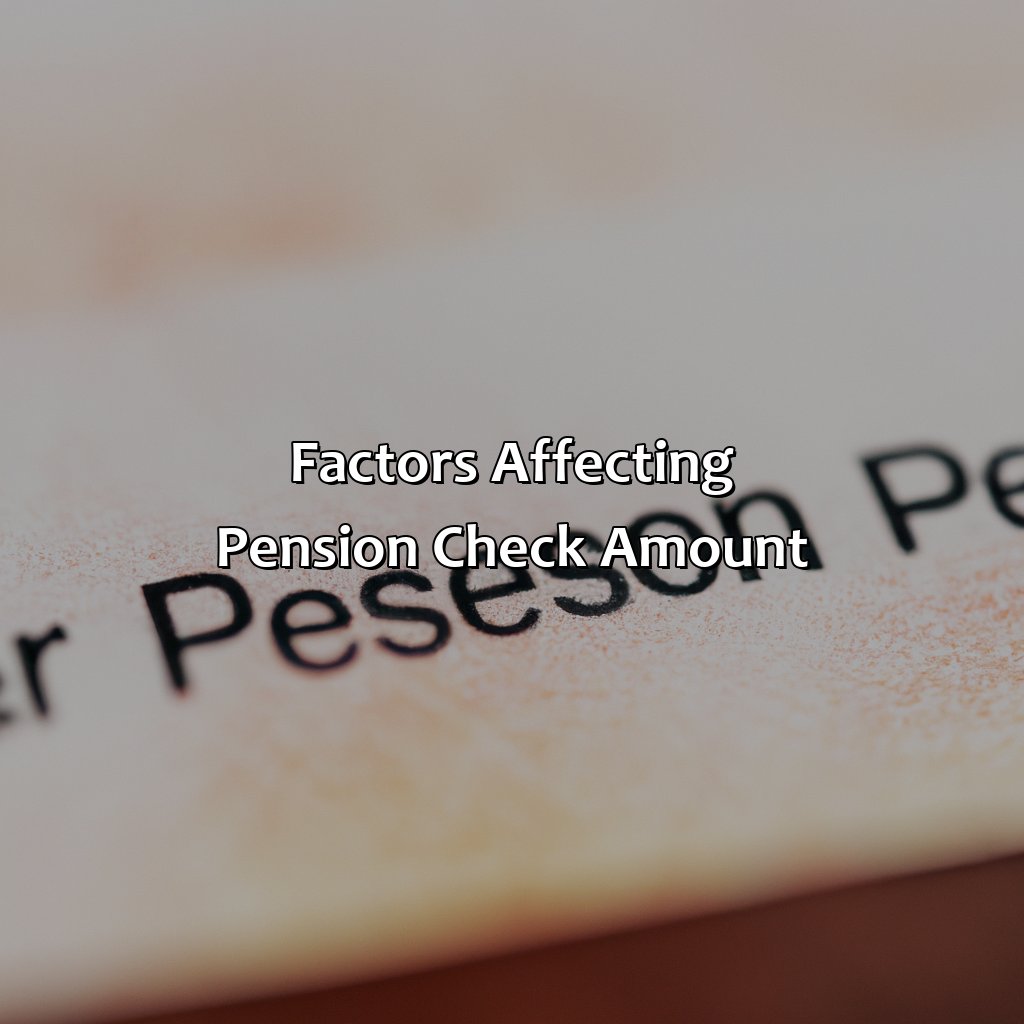
Image credits: retiregenz.com by Adam Jones
Length of Service
The duration of employment is an influential factor in determining the amount received from a pension check. A longer period of service may indicate loyalty, dedication, and a higher level of experience within the organization, which potentially leads to increased benefits.
Additionally, some employers offer incentives for employees with extended tenure by offering more comprehensive benefits packages. These packages include additional contributions to the employee’s retirement savings plan or extra perks like health insurance.
Furthermore, having a prolonged service period can also positively impact an employee’s social security benefits upon retirement. Social security payments increase with the number of years one has paid into the system. If you’re wondering what is ER pension, it is a retirement plan offered by employers.
Considering the importance of length of service for pension check amounts and other related benefits, employees are encouraged to remain employed with their current company for as long as possible to ensure maximum monetary potential at retirement age. Don’t miss out on valuable pension checks in your later years; learn more about the asset test for the aged pension and invest in your employment future now.
Why make six figures when you can just collect one big figure every month in the form of a pension check?
Salary
Compensation Package:
The compensation package plays an influential role in determining the pension check amount. This package comprises various benefits like bonuses, incentives, allowances, and other perks, which form a considerable part of the employee’s overall earnings.
Furthermore, the length of service in a company also adds up to the pension sum. The longer the service period, the higher the proportion of pension money will be granted to the retired employee.
In addition, factors such as age at retirement and years of contribution also impact pension payment amounts. If you are a civil service employee wondering how to claim your pension, it’s important to follow the proper procedures and guidelines set forth by your employer or pension plan provider.
According to a report by Investopedia, “Employers fund pensions plans with either defined benefit or defined contribution schemes.” These schemes directly affect the payout rate and determine how much money an employee receives in their retirement.
To understand more about pensions, it is important to know about pension debt and its impact on retirees.
Age is just a number, but in the world of pension checks, it’s the number that determines if you’ll be dining at Michelin-starred restaurants or the local fast food joint.
Age
The impact of the individual’s age on their pension check cannot be understated. The ideal pension age varies from country to country but generally ranges from 65 to 67 years old. Older individuals who choose to take their pension early may face a penalty, while younger pensioners may receive lower payments due to a shorter contribution period and less investment growth.
Moreover, changes in legislation surrounding retirement also tend to affect the amount of money paid out in support of an individual’s retirement income. For example, with the ongoing COVID-19 pandemic, many governments have introduced emergency measures that allow individuals to withdraw from their pensions earlier without penalties.
It is worth noting that different types of pensions offer varying interest rates and return on investment. Therefore, understanding one’s pension plan is essential in figuring out how much one can expect once they retire.
Ensure you are not caught off guard during your golden years by examining how your current age correlates with your financial plans for the future. Taking responsibility for your retirement planning now can ensure you will be able to enjoy those later years fully. Learn more about what S pension is and how it can benefit your retirement.
Choosing a retirement plan is like choosing a pizza topping – you can go with the classic, traditional option or opt for the weird and funky one that no one really understands.
Retirement Plan Type
The Type of Retirement Plan – Explained
Retirement plans can be classified into different types, each having a unique composition and contribution plan. Here are some of the types:
- Defined Benefit Plans: Retirement benefit is defined according to a formula based on salary history and length of service.
- Defined Contribution Plans: Contributions are made by the employee and/or employer, but the benefit is not predefined.
- IRA or Individual Retirement Accounts: A retirement savings account that provides tax advantages for individuals.
- 401(k) Plans: Employer-sponsored retirement accounts where employees can make contributions from their paychecks.
- SIMPLE IRA or Savings Incentive Match Plan for Employees: Allows small business owners to offer a company-sponsored retirement savings plan to their employees.
- Keogh Plans: A type of qualified retirement plan designed for self-employed individuals or unincorporated businesses.
Apart from these, there are some other types as well. However, it’s essential to choose the right retirement plan according to your age, income level, and financial goals. Understanding these plans’ benefits and drawbacks is crucial before selecting one.
Feeling worried about missing out on having sufficient income during retirement? Educate yourself about the different types of retirement plans available and start investing in one today!
Some Facts About Pension Checks:
- ✅ A pension check is a form of retirement income paid by an employer or a government agency. (Source: The Balance)
- ✅ Pension checks can be received on a monthly or quarterly basis, depending on the terms of the pension plan. (Source: Investopedia)
- ✅ The amount of the pension check is usually determined by factors such as years of service and salary history. (Source: AARP)
- ✅ Pension checks are often guaranteed for life, even if the retiree outlives their life expectancy. (Source: U.S. News & World Report)
- ✅ Pension checks may be subject to federal and state income taxes, as well as potential deductions for health insurance or other benefits. (Source: Forbes)
FAQs about What Is A Pension Check?
What is a pension check?
A pension check is a regular payment made to a retired person from a pension fund, typically paid on a monthly or quarterly basis. This payment is intended to provide financial support to someone who is no longer working and has retired.
Who is eligible to receive a pension check?
Pension checks are typically available to people who have contributed to a pension fund during their working years and have met specific criteria for eligibility, such as reaching a certain age or number of years of service. The specific eligibility requirements can vary based on the type of pension plan and the employer offering the plan.
What types of pension plans offer pension checks?
There are several types of pension plans that offer pension checks, including defined benefit plans, defined contribution plans, and hybrid plans. Defined benefit plans offer a set retirement income based on a formula that takes into account a person’s years of service and salary history. Defined contribution plans allow employees to contribute to an account, while hybrid plans combine elements of defined benefit and defined contribution plans.
How are pension payments calculated?
The calculation of pension payments varies depending on the type of pension plan. In a defined benefit plan, the payment is typically calculated based on the number of years worked and the employee’s salary history. In a defined contribution plan, the payment is based on the amount of money contributed to the account and any investment earnings earned on that money over time.
Can pension payments be taxed?
Yes, pension payments can be taxed as income at the federal, state, and local level. However, the exact tax rules depend on the specific pension plan and the recipient’s individual tax situation.
What happens if a pension plan is underfunded?
If a pension plan is underfunded, it means that the amount of money in the plan is not enough to cover its obligations. In this case, the plan may reduce benefits, increase contributions, or take other steps to address the shortfall.
